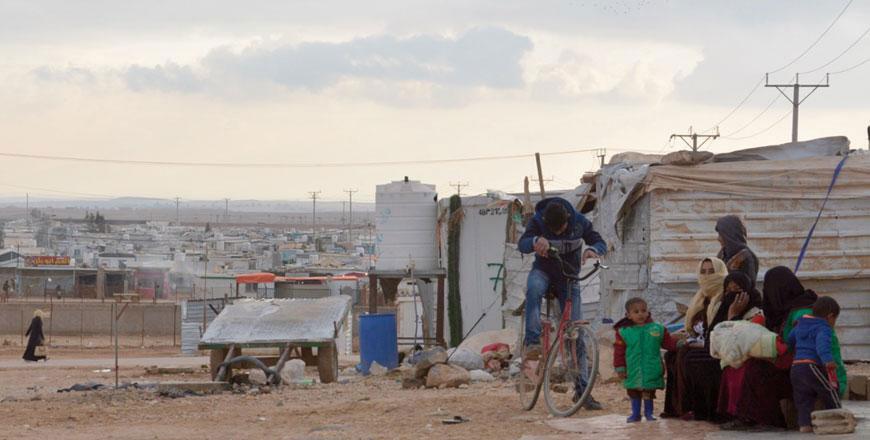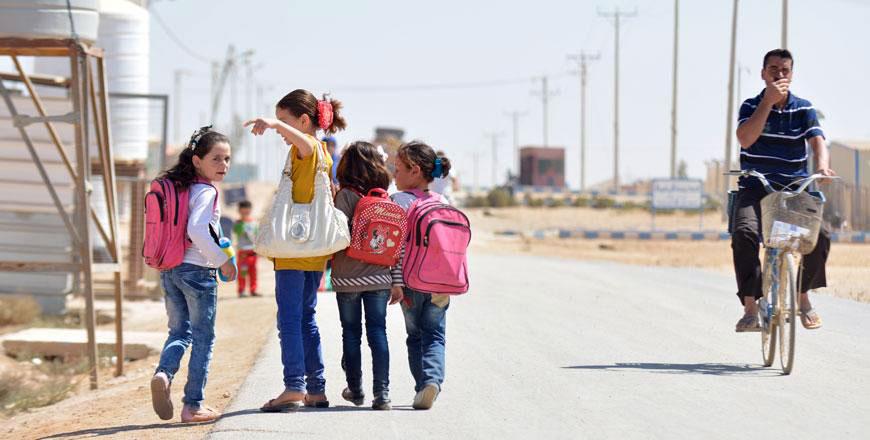You are here
‘Only some 4,000 Syrian refugees return since border reopening’
By JT - Dec 12,2018 - Last updated at Dec 13,2018

Syrian refugees are seen at a camp in Jordan in this undated photo (JT file photo)
AMMAN — Figures of Syrian refugees who returned home from Jordan published recently by some news agencies are “exaggerated” and merely reflect the general traffic at the recently reopened Jaber-Nassib border crossing, UNHCR Representative in Jordan Stefano Severe said on Wednesday.
Severe said that the UNHCR has managed to confirm and verify, through its database, the return of 3,852 refugees who left through the crossing between Jordan and Syria since its reopening on October 15 until December 1.
"Since the Jaber border crossing opened on October 15, many figures have been floated regarding refugee returns. Figures issued by some entities which go into 30,000 plus, are, I would say, a little exaggerated and reflect the general traffic at the border, rather than the actual numbers of refugees," Severe said.
"This is based on a list that the government had shared estimating the number of refugees who returned to Syria at around 4,300,” the representative added.
The difference between the government’s figure and the UNHCR’s is attributed to the fact that many Syrians are not registered with the refugee agency, according to Severe.
Out of the 3,852 refugees who have returned since the reopening of the border crossing, around 50 per cent are from Syria's southern province of Daraa, he said, adding: "We cannot forget that the refugees themselves know when it is safe to go back, and we have to support them in this."
"At the moment, returns are spontaneous,” Severe said, adding that the agency’s role in the return process currently involves working with the authorities at the border to build capacity to properly manage the process, as well as assisting and providing information to refugees who are choosing “organised channels” to return to their home country.
The "expensive documentation", according to Severe, is hindering refugees’ voluntary return to Syria. "At first, they have to go to the Syrian embassy and regularise their status, and pay for documents like passports where needed," the UN official said.
"It is important not to generalise about the situation in Syria as it differs from region to region. Refugees have to be confident in going back home. Our goal is to support their decision. Of course, if we are asked about specific situation then we have to provide information to help them make an informed decision."
The Jaber-Nassib crossing between Jordan and Syria was back to business as usual for passengers and cargo movement under certain conditions agreed on between the two countries, after it was shut in April 2015, due to the escalating violence in the Syrian town of Nassib, just across the border station, some 80km north of Amman.
Winterisation
Severe explained that the UNHCR’s lifesaving “winterisation” support programme to Syrian refugees suffered from inadequate funding at the beginning of 2018, but in September it received “substantial” funds, reaching JD19 million, to protect 70,000 refugee households.
“This is done in the form of cash, which allows refugees to buy basic goods such as gas and blankets, but they can also use the cash for other pressing needs such as healthcare,” the refugee agency representative said.
He called on donors to maintain the level of assistance to host countries, including Jordan.
“It is not the time for us to disengage. Yes, support for Syria itself needs to be stepped up, but not at the expense of host countries,” he noted.
“International support has been steady over the last few years… For 2019, we continue to be a little bit worried, especially as funding needs to rebuild Syria continue to grow. We can only encourage donors to continue to support us here in Jordan,” Severe said.
Related Articles
AMMAN — Figures for Syrian refugees returning home from Jordan since the border’s reopening showed wide gaps between concerned authorities,
AMMAN — The UNHCR on Monday said that a manual validation of the number of Syrian refugees who returned home from Jordan after the reopening
AMMAN — Jordan has appointed a diplomat as an acting chargé d'affaires at its embassy in Damascus.Foreign Ministry Spokesperson Sufian















